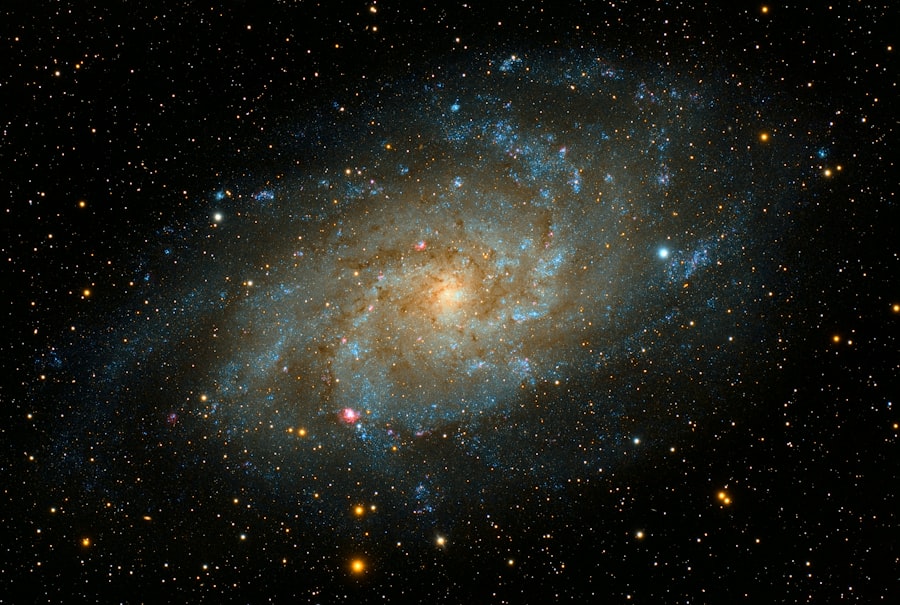The NASA Museum stands as a testament to humanity’s relentless pursuit of knowledge and exploration beyond the confines of Earth. Located in various regions across the United States, these museums serve as gateways to the cosmos, showcasing the remarkable achievements of the National Aeronautics and Space Administration. Visitors are invited to embark on a journey through time, experiencing the evolution of space exploration from its nascent stages to the cutting-edge technologies of today.
The museum not only highlights the triumphs of space missions but also emphasizes the importance of scientific inquiry and innovation that drives humanity’s quest to understand the universe. Within the walls of the NASA Museum, one can find an impressive array of artifacts, interactive exhibits, and educational programs designed to inspire future generations. From the iconic Apollo lunar modules to the Space Shuttle Endeavour, each exhibit tells a story of human ingenuity and courage.
The museum serves as a hub for enthusiasts, students, and families alike, fostering a sense of wonder and curiosity about the cosmos. As visitors explore the various displays, they are reminded of the collaborative efforts that have propelled humanity into space and the ongoing mission to explore the final frontier.
History of Space Exploration
The Dawn of Space Exploration
The launch of Sputnik 1 by the Soviet Union in 1957 marked a pivotal moment in human history, igniting a race to conquer space. This event not only demonstrated the feasibility of sending objects into orbit but also catalyzed a series of groundbreaking advancements in technology and science.
A New Era of Space Travel
The United States responded with its own efforts, culminating in the establishment of NASA in 1958, which would become the cornerstone of American space exploration. As the years progressed, significant milestones were achieved that would shape the future of space travel.
Achieving the Impossible
The Apollo program, particularly Apollo 11’s historic moon landing in 1969, captured the world’s imagination and showcased what humanity could accomplish when united by a common goal. This era was characterized by remarkable achievements, including the development of advanced spacecraft and the establishment of long-term missions that laid the groundwork for future exploration. The legacy of these early missions continues to influence contemporary space endeavors, reminding us of the courage and determination that propelled humanity into uncharted territories.
Spacecraft and Satellites

Spacecraft and satellites are at the heart of modern space exploration, serving as vital tools for gathering data and conducting research beyond Earth’s atmosphere. The evolution of these vehicles has been nothing short of extraordinary, with advancements in design and technology enabling missions that were once thought impossible. From early satellites like Explorer 1 to sophisticated spacecraft such as Voyager 1 and 2, each has contributed invaluable insights into our solar system and beyond.
These machines are not merely metal shells; they are intricate systems designed to withstand the harsh conditions of space while performing complex tasks. Satellites play a crucial role in various aspects of life on Earth, from weather forecasting to global communications. They orbit our planet, collecting data that informs scientific research and enhances daily living.
The Hubble Space Telescope, for instance, has revolutionized our understanding of the universe by capturing stunning images and providing critical information about distant galaxies and celestial phenomena. Meanwhile, spacecraft like Mars rovers have allowed scientists to explore other planets up close, sending back data that deepens our understanding of planetary geology and potential for life beyond Earth. The continuous development of these technologies promises even greater discoveries in the years to come.
Astronauts and Space Missions
| Astronaut | Mission | Duration |
|---|---|---|
| Neil Armstrong | Apollo 11 | 8 days |
| Yuri Gagarin | Vostok 1 | 1 hour 48 minutes |
| Kalpana Chawla | STS-107 | 16 days |
The role of astronauts in space missions cannot be overstated; they are the brave individuals who venture into the unknown, pushing the boundaries of human capability. Training to become an astronaut is an arduous process that requires not only physical fitness but also mental resilience and technical expertise. Candidates undergo rigorous training that includes simulations, survival training, and learning to operate complex spacecraft systems.
This preparation is essential for ensuring their safety and success during missions that can last from days to months in space. Throughout history, astronauts have embarked on numerous missions that have expanded our understanding of space and science. From John Glenn’s pioneering orbital flight in 1962 to Peggy Whitson’s record-setting time aboard the International Space Station (ISS), each mission has contributed to a growing body of knowledge about living and working in space.
These missions often involve international collaboration, showcasing how countries can unite for a common purpose despite geopolitical differences. The stories of these astronauts inspire countless individuals around the world, encouraging them to dream big and pursue careers in science, technology, engineering, and mathematics (STEM).
Space Technology and Innovation
Space technology is a driving force behind many innovations that have transformed life on Earth. The challenges posed by space exploration have led to breakthroughs in materials science, telecommunications, robotics, and even medicine. For instance, technologies developed for spacecraft have found applications in everyday products such as smoke detectors, memory foam mattresses, and even advanced medical imaging devices.
This phenomenon is often referred to as “spinoff” technology, highlighting how investments in space research can yield benefits far beyond their original intent. Moreover, innovations in propulsion systems, life support technologies, and autonomous systems continue to evolve as scientists and engineers seek to make space travel safer and more efficient.
As technology advances, it opens new avenues for exploration, including potential manned missions to Mars and beyond. The interplay between space exploration and technological innovation underscores how humanity’s quest for knowledge can lead to unforeseen advancements that enhance life on Earth.
Space Science and Research

Exploring the Cosmos
Instruments like space telescopes enable scientists to observe distant galaxies and study their formation. Meanwhile, missions to other planets provide valuable data about their atmospheres, geology, and potential for life. Each new discovery adds to our understanding of the universe, helping to complete the puzzle of the cosmos.
Advancements in Microgravity Research
The International Space Station (ISS) serves as a unique laboratory for conducting experiments in microgravity conditions that cannot be replicated on Earth. Research aboard the ISS has led to breakthroughs in various fields, including biology, materials science, and environmental monitoring. By studying how living organisms respond to microgravity, scientists can inform future long-duration space missions and gain insights into health issues on Earth.
International Collaboration
The collaborative nature of space research fosters international partnerships among scientists from different countries, promoting a shared commitment to uncovering the mysteries of the universe.
Future of Space Exploration
The future of space exploration is poised for unprecedented growth as new technologies emerge and international collaboration expands. With ambitious plans for crewed missions to Mars on the horizon, organizations like NASA are actively working on developing sustainable habitats for astronauts on other planets. These missions will not only test human endurance but also provide critical data about living conditions beyond Earth.
The prospect of establishing a human presence on Mars ignites excitement about what lies ahead for humanity’s journey into space. In addition to Mars exploration, private companies are increasingly playing a significant role in shaping the future of space travel. Initiatives such as lunar bases and asteroid mining are being explored as potential avenues for resource acquisition and scientific research.
The commercialization of space travel may soon allow civilians to experience weightlessness or even participate in scientific experiments aboard spacecraft. As humanity stands on the brink of this new era in space exploration, it is essential to consider ethical implications and ensure that exploration is conducted responsibly for future generations.
Educational Programs and Outreach
Educational programs offered by NASA museums play a vital role in inspiring young minds to pursue careers in STEM fields. Through hands-on activities, workshops, and interactive exhibits, students gain firsthand experience with concepts related to space science and technology. These programs are designed not only to educate but also to ignite curiosity about the universe and foster critical thinking skills essential for future innovators.
Outreach initiatives extend beyond museum walls; NASA actively engages with schools and communities through virtual programs and partnerships with educational institutions. By providing resources such as lesson plans, videos, and live Q&A sessions with astronauts or scientists, NASA aims to make space science accessible to all students regardless of their background or location. This commitment to education ensures that future generations are equipped with knowledge about space exploration while encouraging them to dream big—perhaps even inspiring the next astronaut or scientist who will contribute to humanity’s ongoing journey into the cosmos.
If you’re interested in learning more about extreme weather phenomena, you may want to check out an article on what a wedge tornado is.

